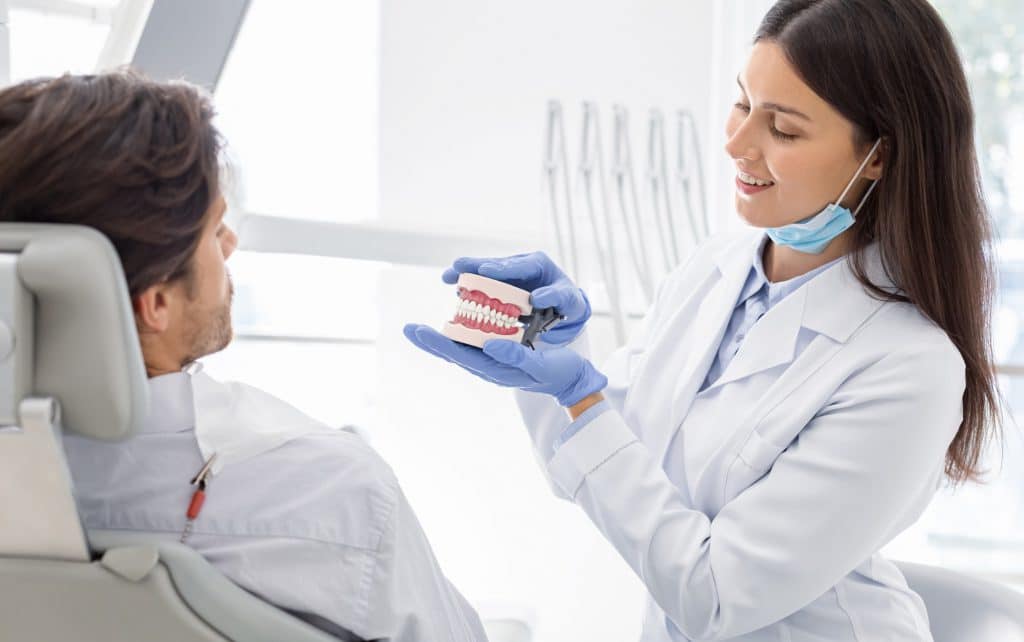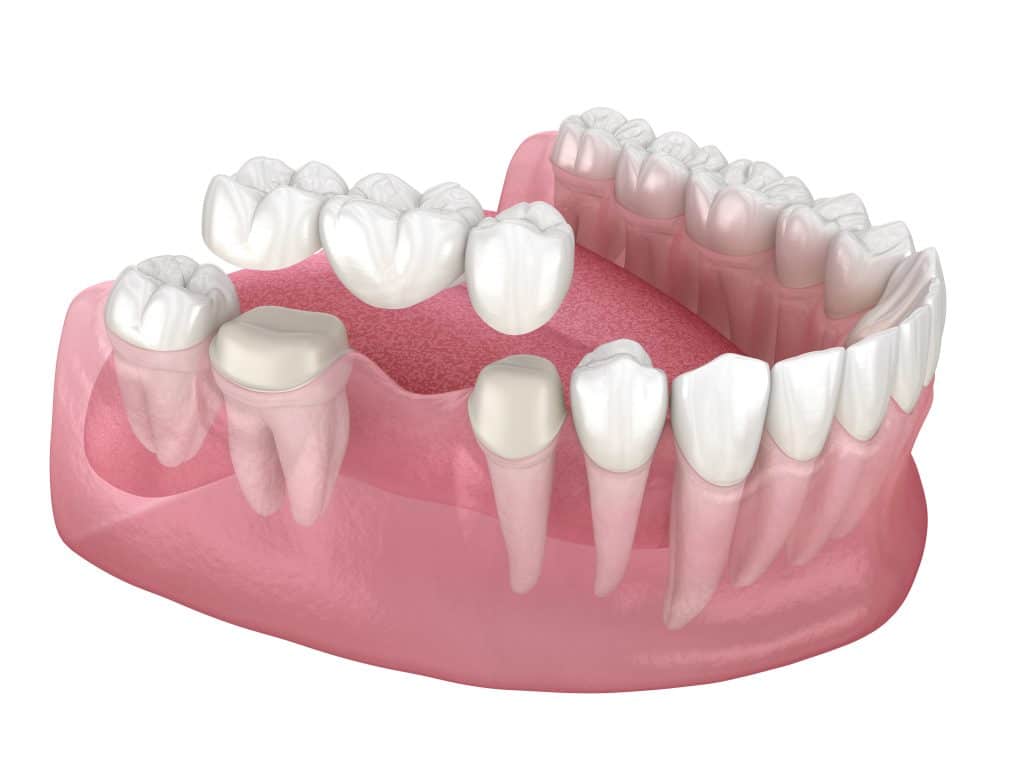DENTAL BRIDGE
Are You Missing a Tooth?
Missing teeth compromise the ability to chew, eat, speak, and smile with confidence.
If you are missing one or more of your teeth, we can help. We offer Dental Bridge, also known as partial dentures, to our patients in Toronto and surrounding communities. Durable, natural-looking dental bridges can restore function and an attractive appearance to your smile. Dr. Sol Weiss has the training and experience needed to help you rebuild your smile. Reach out to our office today to schedule a consultation.


What is a Dental Bridge?
A dental bridge literally bridges the gap left by a missing tooth. A bridge can be made up of two Dental Crowns with one or more false teeth in between. The false tooth, also known as a pontic, is anchored by the crowns, which cover two adjacent teeth. Dental implants are another option for anchoring a dental bridge. Dental implants are small titanium posts surgically implanted in the jaw bone. When it comes to supporting a bridge, dental implants eliminate the need for dental crowns, allowing you to preserve the natural structure of surrounding teeth. During a consultation, Dr. Weiss can determine whether you are a good candidate for a dental bridge, and can help you decide whether crowns or implants are the best method of support.
Although bridges and crowns can be crafted of metal or porcelain fused to metal, our practice prefers all-porcelain crowns and bridges for their ability to blend seamlessly with your natural teeth. Modern dental porcelain is incredibly durable and natural-looking. The result is a fully functional restoration that you can be proud to share each time you smile.
Combining Aesthetics with Function
If you choose to support your bridge with an implant, the two-week process of creating and placing the bridge will be preceded by two surgeries, with about four to six months of healing time in between. Though this option requires considerable time and preparation, it is widely considered the very best way to support bridges and other restorations. With proper care, implants provide support equal to that of natural tooth roots, and can last a lifetime. Our team can help you decide which restoration is best for your needs.
Frequently Asked Questions
Can a dental bridge be repaired if it gets damaged?
The process of getting a dental bridge typically involves multiple steps and may require several dental visits. The exact duration can vary depending on factors such as the individual case, the type of dental bridge, and the dental practice’s protocols. Here is a general overview of the timeline for getting a dental bridge: сonsultation and planning, еooth preparation, impression-taking, temporary bridge placement, bridge fitting and adjustments, final placement,
The overall process can take several weeks to complete, with intervals between appointments to allow for the fabrication of the bridge in the dental laboratory. The specific timeline can vary depending on factors such as the complexity of the case and the availability of the dental laboratory.
Will I need to have my natural teeth modified to support a dental bridge?
Yes, in most cases, your natural teeth will need to be modified to support a dental bridge. The teeth adjacent to the gap where the missing tooth or teeth are being replaced, known as abutment teeth, serve as the support for the dental bridge. The process typically involves tooth preparation, which may include: reshaping, reduction.
The amount of modification required will depend on factors such as the type of dental bridge, the condition of the abutment teeth, and the specific treatment plan determined by your dentist. The goal is to create a stable foundation for the dental bridge, ensuring proper alignment, function, and aesthetics.
Can I still floss and brush my teeth with a dental bridge?
Yes, you can and should continue to floss and brush your teeth with a dental bridge. Proper oral hygiene is essential for maintaining the health of your natural teeth, gums, and the supporting structures of the dental bridge.
Proper oral hygiene practices, including brushing, flossing, and regular dental visits, are crucial for the long-term success of your dental bridge. Maintaining good oral hygiene will help prevent tooth decay, gum disease, and other oral health issues that can impact the longevity and function of your dental bridge.
Can a dental bridge be repaired if it gets damaged?
Yes, a dental bridge can be repaired if it gets damaged, depending on the extent and nature of the damage. The specific repair options will vary based on factors such as the type of dental bridge, the material used, and the location and severity of the damage. Here are a few possible scenarios: repairing a chipped or cracked bridge, replacing a damaged pontic (replacement tooth), reattaching a loose bridge, remaking the bridge.
It’s important to note that the potential for repair depends on the individual circumstances, the condition of the bridge, and the underlying supporting structures. In some instances, a severely damaged bridge may require replacement with a new bridge. Promptly contacting your dentist if you notice any damage or issues with your dental bridge is crucial, as early intervention can increase the likelihood of successful repairs.
Remember to consult with your dentist for an accurate assessment of your specific case and to explore the available options for repairing a damaged dental bridge.
